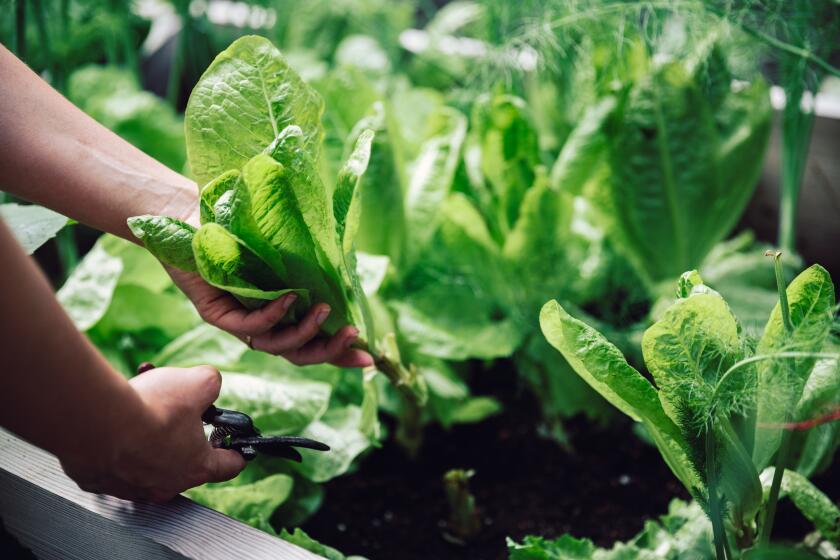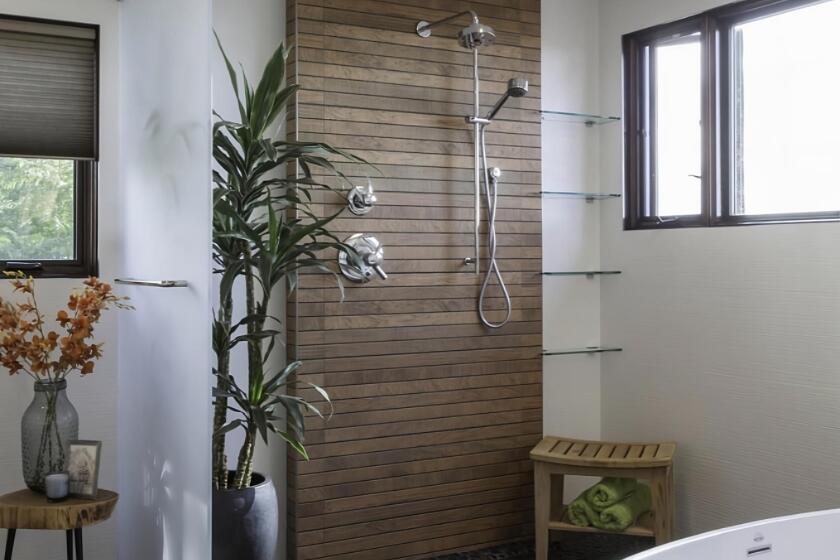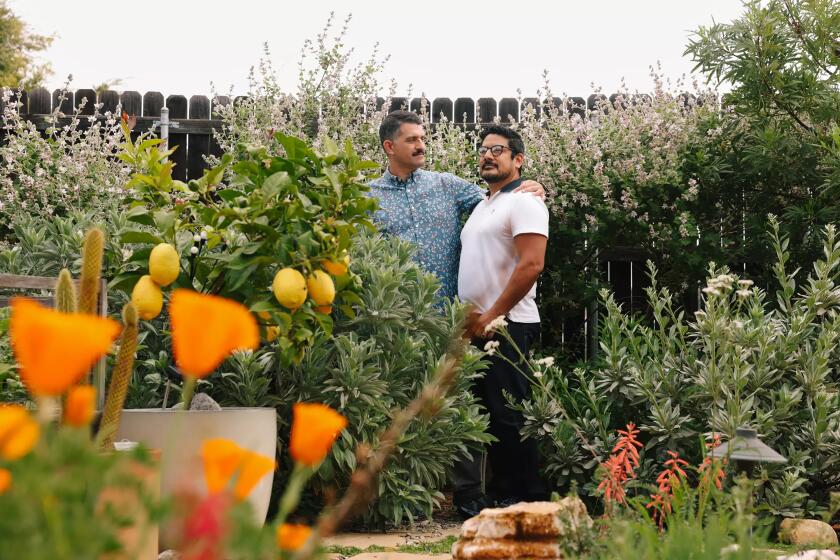Garden Mastery: Tropical staghorn ferns take root here
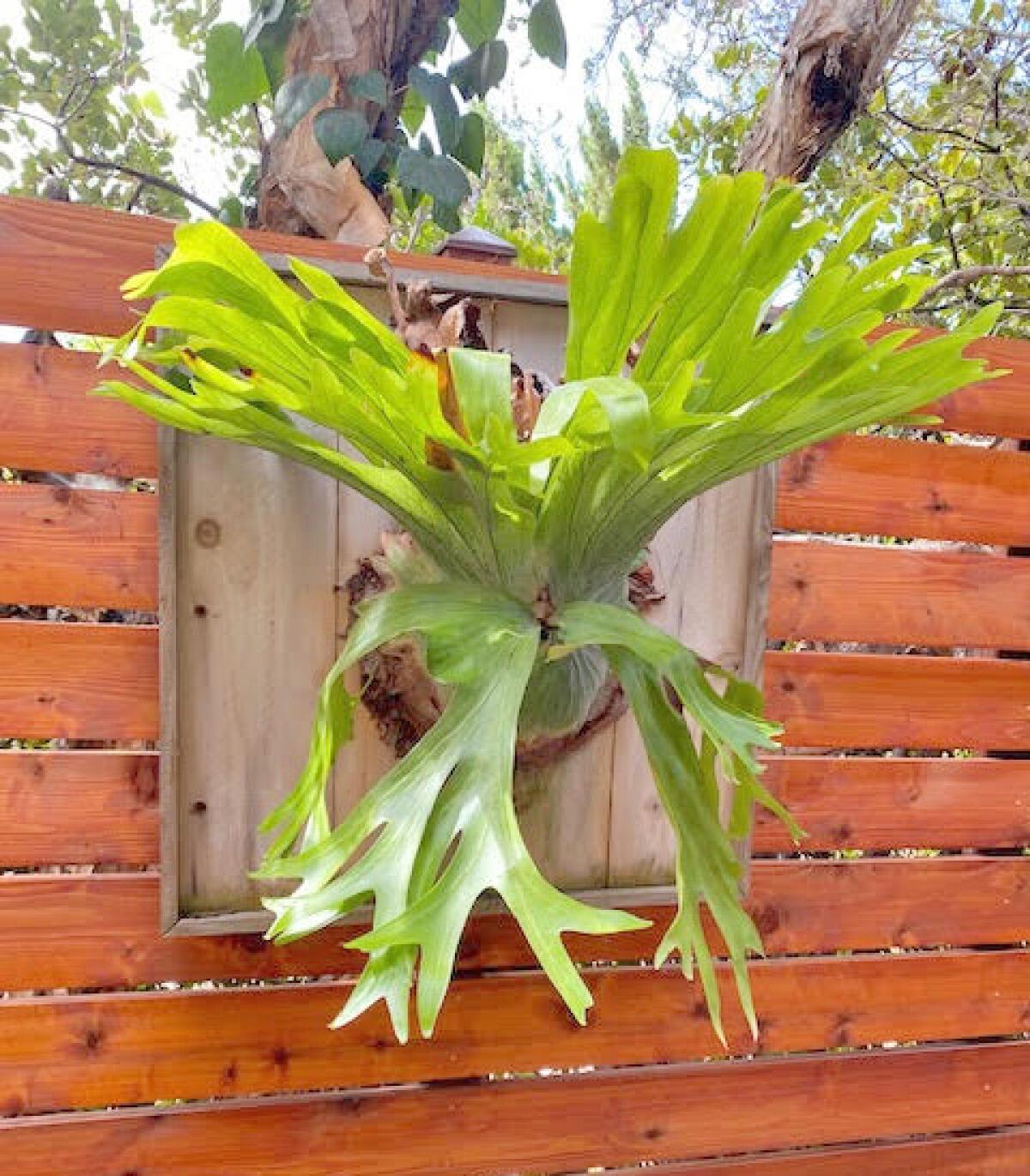
For sheer pop, indoors or out, staghorn ferns (Platycerium spp) can’t be beat. Once considered difficult to grow in San Diego County, staghorn ferns are now commonly found in nurseries, hanging on patio walls and backyard fences and as centerpieces on living room coffee tables. Even in San Diego’s hot, dry East County, with the right placement and care, staghorn ferns can thrive.
Staghorn ferns are native to tropical and temperate areas of South America, Africa, Southeast Asia, Australia and New Guinea. Platyceria spp are epiphytic ferns that, in their forested natural habitat, grow on the sides of trees and propagate by releasing spores that attach themselves to the bark of neighboring trees.
The greenery you see when observing a staghorn fern is composed of leaves of two types, each distinctly formed. The green plate at the base of each new pup is the shield frond. It covers the roots and traps nutrients and water for the plant. Elongated, antlerlike leaves — hence the name staghorn — emerge from the base of the shield leaf and, when mature, will develop a mass of brown spores at their tips.
For $35 fee, participants get access to recorded sessions on varied topics, available for 15 days
In the wild, staghorn ferns are opportunistic feeders that “capture” organic material in the cupped trough formed by the layers of dried shield leaves. Staghorn ferns have roots, but they are more for anchoring the plant to its tree trunk or mounting board than as a nutrient pathway. It is typical, as a landscape plant or in its native habitat, for the staghorn fern to reach a weight that exceeds the ability of the roots to secure the plant, and it will, after many years, fall to the ground.
The key to successfully cultivating staghorn ferns in “captivity” is to, as much as possible, mimic the environment and conditions found in their native habitat. First, it must be recognized that not every one of the 17 species of Platyceria adapt well to all areas of our home county. One that does do well and is the most common species found in our area is Platycerium bifurcatum, with its elegant long “antlers” split almost down to the base of the leaf. Platycerium superbum is considered by many to be the most spectacular (and expensive!) of the species. Others, like P. Hillii and P. Veitchii Lemoinei, can sometimes be spotted under a patio awning.
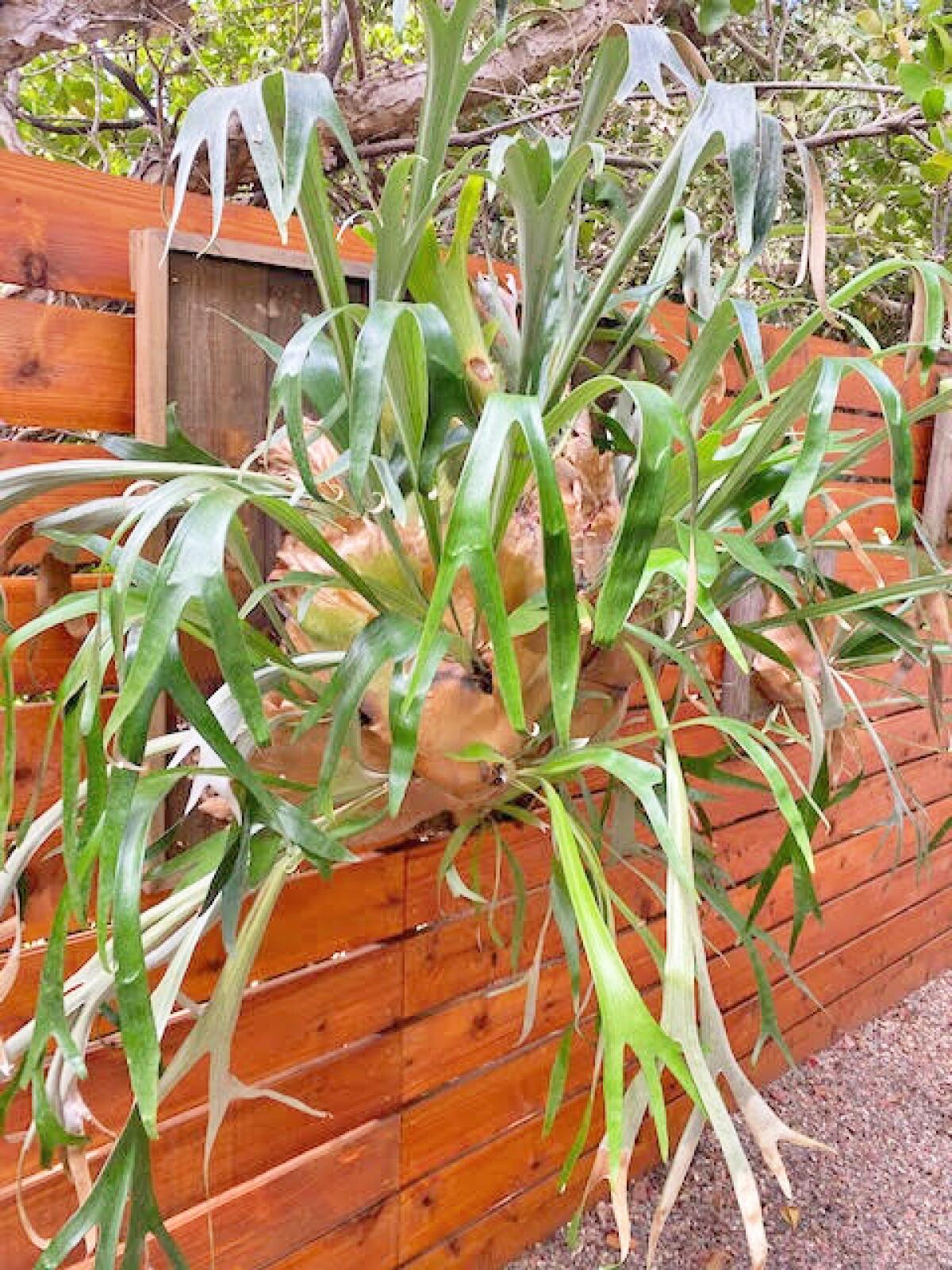
Whether mounted on a board, hanging in a basket or potted up, sphagnum moss is the typical medium of choice for staghorn fern preparation. It is inexpensive and, because of its hairlike quality, holds water and is easy to manipulate into place. Other more expensive media, such as peat moss or Spanish moss, can be used. If set in place correctly and properly maintained, staghorn fern pups — smaller versions of the parent plant — will begin peeking out between the spaces in the dried body of the plant, typically on the bottom side.
An irrigation schedule is dependent upon the time of year. Irrigate once a week when the weather is hot and dry; every second or third week in wetter, colder weather. An easy method to ensure saturation of the moss medium is to dip the plant into a sink or tub of water, then remove, drain and replace to its chosen location. The staghorn fern can also be hand irrigated by pouring water into the medium behind the main plant until it runs through. Either way, it is important that the moss be allowed to dry out between waterings.
In spring and summer, feed the plant monthly using a balanced fertilizer with a ratio of 1-1-1 NPK (nitrogen, phosphorus and potassium). In fall and winter, fertilize every other month. If the staghorn fern begins to grow too large, too quickly, switch to less frequent fertilizing — perhaps once or twice a year to reduce the rate of spread. If hung outside, staghorns are tolerant of a variety of vegetative matter that collects in the center of the plant. This material will decompose and provide additional nutrition to the plant. At one time, staghorn ferns were colloquially known as “banana eating plants,” and the practice of stuffing banana peels into the plant medium is still common today. The occasional banana peel is OK, but too much rotting vegetative material will attract pests.
If the plant is not allowed to dry out between watering, black spots may appear on the antler leaves. This is black spot fungus. If this condition appears, withhold watering until the moss medium dries out completely. If needed, a common-use spray fungicide can be applied to the leaves.
Generally speaking, staghorn ferns are pest-free, but sometimes mealy bugs, spider mites or scale may appear. Treat these insect pests with an insecticidal soap. Avoid using oil-based products on the leaves.
For the most part, staghorn ferns are an easy-care plant. Once the appropriate location has been determined, the plant can be very forgiving. The occasional misstep in care and feeding does not necessarily lead to the loss of the plant. Even so, implementing a consistent watering and nutrition schedule and routine monitoring will go a long way toward ensuring that this gorgeous addition to your living room, backyard or patio remains healthy and vibrant.
Harrelson has been a San Diego Master Gardener since 2012. He practices low-water landscaping at his home in Jamul and enjoys caring for staghorn ferns.
For questions on home gardening, contact the UCCE Master Gardeners of San Diego County Hotline at (858) 822-6910 or by email at help@mastergardenerssandiego.org.
Get U-T Arts & Culture on Thursdays
A San Diego insider’s look at what talented artists are bringing to the stage, screen, galleries and more.
You may occasionally receive promotional content from the San Diego Union-Tribune.
